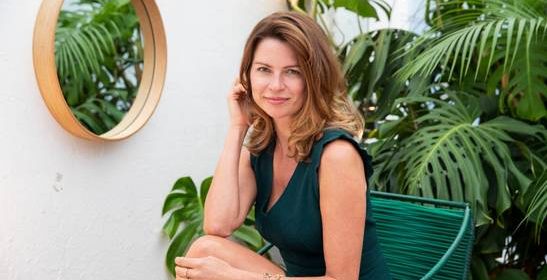Nutritionist to the Royals: 'The secret to weight loss is the balance of blood sugar'

As a glamorous former fashion model, close friend of the Royal Family, and nutritionist to a host of A-list celebrities, it would be easy to assume Gabriela Peacock extols the kind of quirky dietary practices so beloved of the rich and famous – seven-day juice cleanses, bland broccoli breakfasts, soul-sapping zero-carb regimes. So it’s heartening that the 40-year-old mother of three is a fan of big lunches, mid-afternoon snacks, hearty shepherd’s pies, dark chocolate and the occasional Friday night curry.
“In an ideal world, everyone would be gluten free, dairy free, take so many supplements and eat everything organic – but I don’t do that and nobody else would do it either,” she declares, with disarming honesty. “People are so confused about what is good for you or not. Fifteen years ago, there was a lack of information. Today, there is too much.”
Please log in or register with Independent.ie for free access to this article.
Log In
New to Independent.ie? Create an account
Peacock grew up in the Czech Republic, but now lives in London with her husband – a hedge-fund manager – and their three children. Although she promotes her own brand of supplements and offers weight-loss programmes for those in need of quick results, her core approach to everyday nutrition is defiantly simple. And it has earned some recognisable advocates: Peacock is believed to have helped her friends Princess Eugenie and Prince Harry get in shape for their weddings, and her clients include Jodie Kidd and James Blunt.
What differentiates Peacock from many nutritionists in the celebrity sphere is her quest for balance, rather than extreme dieting.
“The biggest thing with regards to well-being and weight loss is the balance of blood sugar,” she explains. “That means protein with every meal, regular snacks and good meal composition.” In general, she suggests five meals a day as a good approach, featuring three mains and two snacks that combine protein and high-fibre carbs with fruit and vegetables. “The changes you make just by balancing blood sugar levels are amazing in terms of energy, sleep, the way you feel during the day – and weight balance. To lose weight, you need to prevent insulin and blood sugar spikes as much as possible.”
So, what is her own diet like? Peacock says she is a “terrible cook” and the food she eats is “not crazy healthy, but very well-balanced”. On a typical day, she has a protein smoothie with nut milk for breakfast. “I put in maybe half an avocado and some fruits to feel good about myself and maybe any greens which I find in my fridge.”
For lunch, she has sushi or a salad with tuna, salmon or grilled fish – “large salads, not teeny little fiddly ones, so often it is grains, beans, pulses, lentils and hummus. I like to eat a lot of food, but healthy food, and I think that is quite nice”.
In between her main meals, she enjoys snacks, such as hummus on crackers, chopped carrots and cold meats, dark chocolate or nuts and seeds. “I eat all the time with three to four-hour gaps in between meals,” she says. Around 5pm, she enjoys a “mini dinner” by picking at her children’s leftover food – often a cottage pie or chicken and vegetables – and then she eats a second light dinner, such as a salad, Thai curry or soup, around 8pm.
Despite keeping her core advice uncomplicated, Peacock believes there is a place for targeted strategies such as intermittent fasting – provided they have a clear focus and a fixed duration. She says her clients have experienced weight loss of between 1.8-3.7kg from two weeks of intermittent fasting.
“I do alternate-day fasting when they really want to achieve results in a short period of time – my clients don’t always have three months.”
Long term, says Peacock, the key to making healthy choices is basic self-education. It’s a strategy that starts at home.
“The children have healthy food, but in restaurants, they regularly have pizzas or some pastry and Nutella for breakfast at a hotel. It is all fine in moderation, so long as I am embedding the difference between a treat and a meal. My daughter now says: ‘If I have a portion of protein like a yoghurt or an egg, could I then have Nutella on pancakes? Or two?’. It shows that she is starting to understand what is good, I guess.”
©The Telegraph
Source: Read Full Article